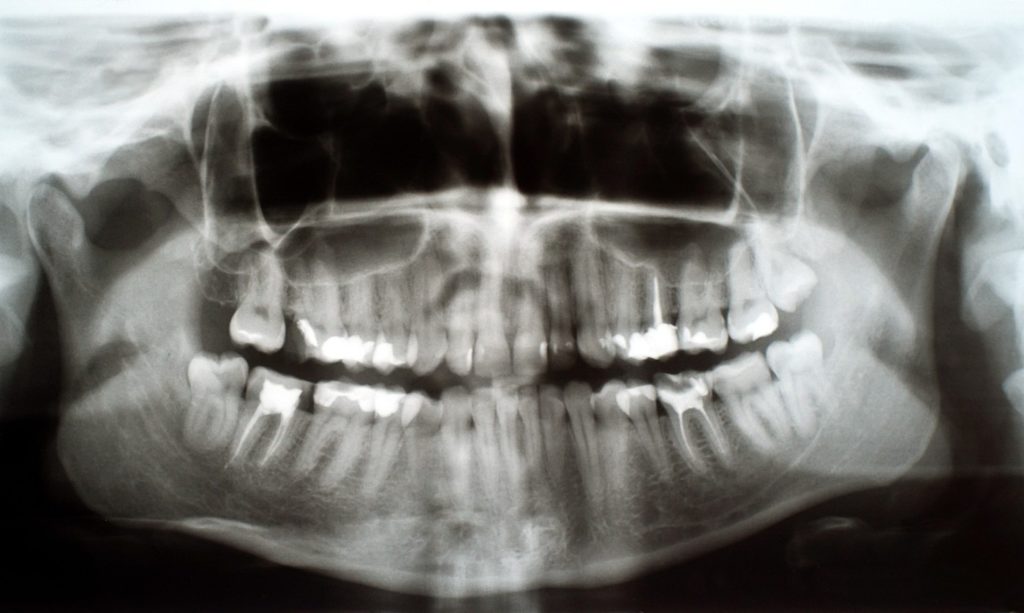While orthodontic treatment such as braces or clear alignment therapy can be used to correct misalignment of the teeth and any related issues, corrective jaw surgery may be necessary to fix abnormalities with the jaw growth or positioning. Trying to correct mismatched jaws using orthodontics alone can lead to periodontal problems, relapse, jaw joint problems, and a changed facial appearance. Here at Dillehay Orthodontics, we see jaw misalignment due to injuries and birth defects, and for some patients, the upper and lower jaws have grown at different rates. In these cases, orthognathic surgery may be the best treatment option. This corrective jaw surgery involves moving the bones of the upper jaw, lower jaw, or both. The jaws may be lengthened or shortened, or moved up/down/in/out, resulting in a more harmonious bite and symmetrical facial appearance. This repositioning can also improve jaw joint function, chewing ability, speech, breathing, sleep apnea, and the overall health of the teeth and gums.
Who is a candidate for orthognathic surgery?
Generally, we would recommend orthognathic surgery for patients with an improper bite or jaws that are positioned incorrectly. Jaw growth is a gradual process, and as mentioned above, in some cases the upper and lower jaws may be mismatched once that growth is complete. Injury to the jaw during growth can be another cause for the inconsistent growth of the jaws. This can result in a number of issues that can affect chewing function, speech, long-term oral health, and the facial appearance. Any of the following conditions could benefit from corrective jaw surgery:
- Difficulties with chewing or biting food
- Difficulty swallowing
- Chronic jaw or jaw joint (TMJ) pain and headache
- Excessive wear and tear of the teeth
- Open bite (space between the upper and lower teeth when the mouth is closed)
- An unbalanced facial appearance from the front or side
- Facial injury or birth defects
- Receding chin (overbite)
- Protruding lower jaw (underbite)
- The inability to make the lips meet without straining
- Chronic mouth breathing and/or dry mouth
- Sleep apnea
Any of these symptoms can exist at birth, while some may be acquired after birth as a result of hereditary or environmental influences, or due to traumatic injury of the face.
For some of these issues, orthognathic surgery may not always be necessary. Orthodontics have made enormous advances in recent years, and orthodontic treatment alone may be enough to correct the problem, but this depends greatly on each individual case. Orthognathic surgery is complex, and because of the intricate way the teeth bite, along with the combined effect on a patient’s appearance when moving the teeth and jaws, the procedure must be carefully planned. A team approach is favored, with Dr. Dillehay or Dr. J.K. working alongside an oral surgeon as well as your dentist and other dental specialists, such as periodontists and endodontists, to determine if orthognathic surgery is the appropriate treatment option.

What patients can expect from the orthognathic surgical process
Before any treatment begins, we will schedule a free consultation visit at one of our five offices in and around Wichita. One of our doctors will perform a thorough examination, complete with x-rays and 3D models. Our team utilizes the latest in digital imaging and simulation technology to demonstrate to the patient the benefits that can expect from orthognathic surgery, from improved functionality to a more attractive smile.
Orthodontics will almost always be an essential part of the overall plan. This means we will generally require pre-surgical orthodontics to align the teeth independently in each jaw. Once surgery has been successfully completed and the jaws are aligned, we will employ post-surgical orthodontics to finish aligning the teeth into the most optimal bite.
Computerized treatment planning helps us minimize treatment times and the recovery period, as well as enhance the overall efficacy of jaw surgery. State-of-the-art materials will be used by the surgeon during the procedure, such as titanium plates and miniature fixation screws. These provide stability, strength, and predictability. These technological advances and procedures help to reduce post-surgical recovery time, giving patients the chance to return to their normal routines as soon as possible after the procedure.
In the not-so-distant past, patients who underwent orthognathic surgery had to have their jaws wired together to hold the bones in place as they recovered. Thankfully, modern orthodontics allows us to use small titanium plates and screws instead. These hold the bones in place while they are healing, and mean that most patients will wake up from surgery being able to move their mouth normally.

Working towards improved oral health with Dillehay Orthodontics
If you are a candidate, orthognathic surgery can move your teeth and jaws into a new, improved position that will give you a more attractive, functional, and healthy dental-facial relationship. We understand the kind of commitment it takes to correct these conditions through surgery and orthodontics, but we believe fully in this approach as an investment toward a life that is free from chronic jaw pain and dental issues! While the full process may take several years to complete from start to finish, Dillehay Orthodontics can give you beautiful results that will last a lifetime. For more information on orthognathic surgery, or what orthodontics, in general, has to offer you and your family, get in touch with us today. Your free consultation is the first step towards the best smile of your life!
